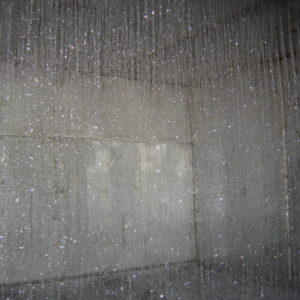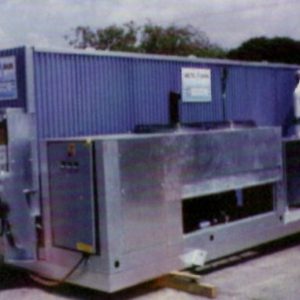Produce That Benefits Most from Hydrocooling
Proper cooling is essential for almost any type of produce in order to ensure that quality is preserved as fruits and vegetables begin their journey to the end consumer. Here at SEMCO/SEMCOLD LLC, we offer many different kinds of cooling systems and different cooling methods are better suited to different types of produce. In this article let’s take a look at hydrocooling and the produce that benefits most from this method.

Why Produce Cooling Is So Important
Good produce cooling is important for a number of reasons. Field heat, or the ambient temperature that permeates a plant while it is growing, can have many detrimental effects that begin to affect the produce as soon as it is harvested. These include wilting due to water loss, rapid cellular respiration that leads to softening, and high levels of ethylene production, which can make the fruit overripe. In addition, warmer temperatures are more hospitable to decay-causing microorganisms such as molds and bacteria.
Proper cooling as soon as the crop is picked can slow, delay, or even prevent many of these undesirable processes. It is important to ensure that field heat is rapidly dissipated as soon as possible after the produce has been harvested. This keeps fruits and vegetables fresher for longer, decreasing the urgency to sell and improving overall quality once it is purchased.
Hydrocooling Basics
Hydrocooling is a cooling method in which produce is directly cooled by chilled, near-freezing water. This cold water runs over the fruits and vegetables, quickly dropping their temperature and eliminating problems due to heat. The water is cooled either with ice, a refrigeration system, or a system specially designed for hydrocooling.
The Advantages of Hydrocooling
There are many benefits to hydrocooling. One of the biggest is that it is very rapid; water transfers heat away from food up to 15 times more rapidly than air does. Hydrocooling systems can be designed for a range of operation sizes, capable of handling both small loads and very large ones. Also, hydrocooling helps prevent moisture loss in produce, ensuring that the fruits and vegetables will not dry out—a common concern with some other types of cooling systems.
In addition, depending on the design of the system, hydrocooling can also act as a way to partially wash the produce. This is not true, however, for hydrocooling systems where the water is recirculated without being purified. These are a few of the reasons why hydrocooling is a popular option among produce growers.








Important Considerations for Hydrocooling
A number of factors should be taken into account when trying to decide if hydrocooling is the best option for a crop. One of the biggest is concern about rot and disease. Although colder temperatures discourage decay, wet environments are friendly to microorganisms, meaning that some of the disease-prevention benefits of cooling can be reduced. For many types of produce, this difference is negligible, but foods that are especially susceptible to disease should not be hydrocooled.
In addition, the type of packaging should also be considered. Hydrocooling should be avoided for packages that are not water permeable, preventing the water from flowing inside and around the produce. Also, the packages must be designed to drain well, so that the water does not collect and pool in the storage area. Mesh bags, bulk bins, and wire crates are well-suited for hydrocooling; palletized produce can be hydrocooled if it is stacked correctly.
Finally, it is important to note that hydrocooling is primarily a pre-cooling method meant to remove field heat rapidly. Hydrocooling is not advisable as a standalone cooling method because at lower temperature it is not energy efficient. Hydrocooling is often done in conjunction with room cooling or forced-air cooling.
Best Produce for Hydrocooling
There are many types of fruits and vegetables that respond particularly well to hydrocooling. These include:
- Apricots
- Peaches
- Plums
- Nectarines
- Cantaloupe
- Apples
- Pears
- Cherries
- Spinach
- Lettuce
- Endive and other greens
- Leeks and Green Onions
- Asparagus
- Broccoli
- Snap Beans
- Pea Pods
- Brussel Sprouts
- Cauliflower
- Turnips
- Cucumbers
- Corn
Foods that should not be hydrocooled include those that are highly susceptible to wetting, such as berries, potatoes, bulb onions, and garlic. This type of cooling should also be avoided for citrus fruits, mushrooms, grapes, and squash. For information regarding cooling methods for particular types of produce be sure to check out our past articles.
SEMCO/SEMCOLD LLC Designs Great Hydrocooling Systems
Here at SEMCO/SEMCOLD LLC, we are proud to offer a wide variety of cooling solutions to our clients with our specialty design, manufacture, and installation services. Hydrocooling is just one excellent option for keeping your produce fresh and your quality high. Contact us for more information regarding the system that is best for your crop.


